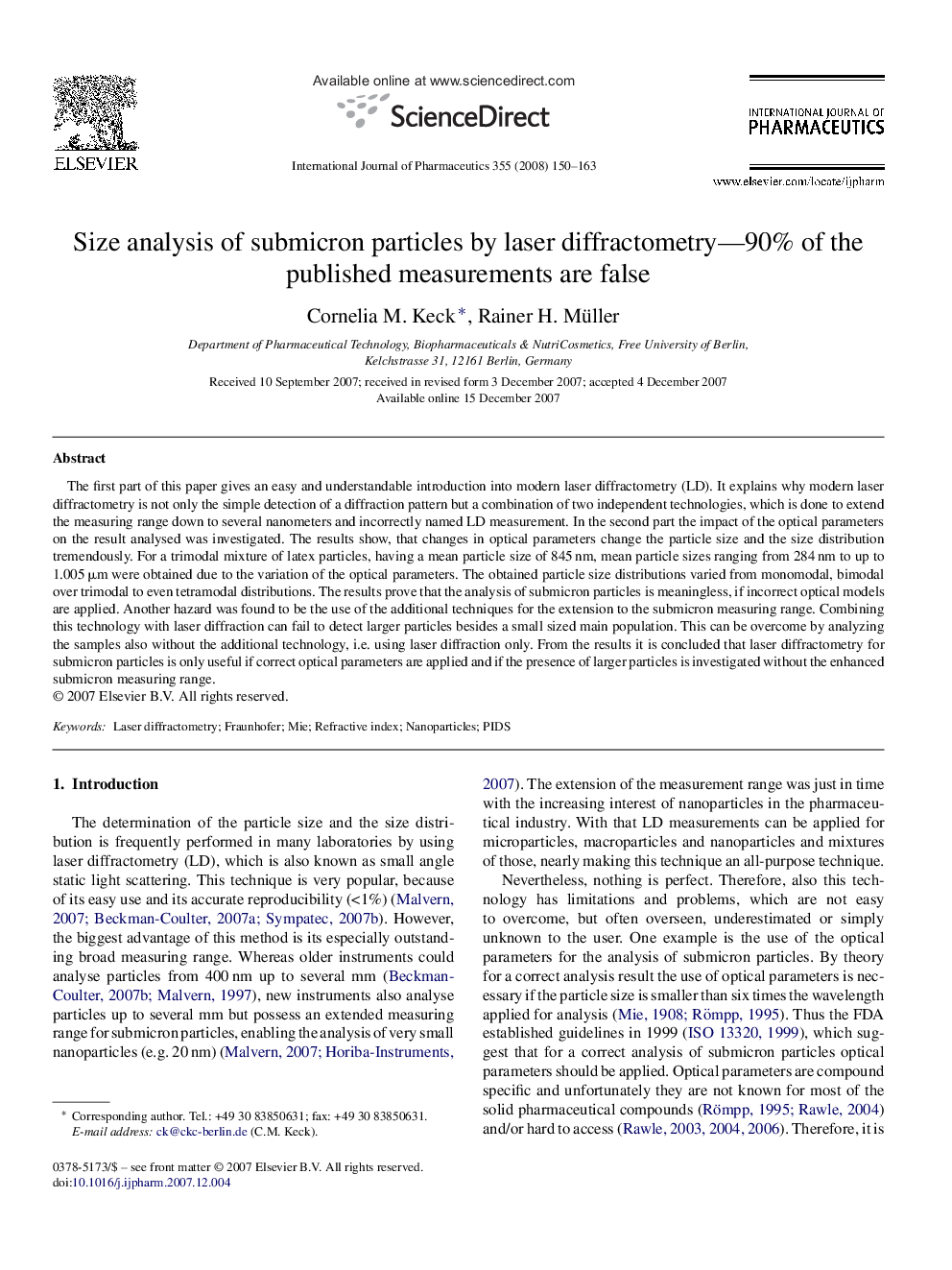| Article ID | Journal | Published Year | Pages | File Type |
|---|---|---|---|---|
| 2505580 | International Journal of Pharmaceutics | 2008 | 14 Pages |
The first part of this paper gives an easy and understandable introduction into modern laser diffractometry (LD). It explains why modern laser diffractometry is not only the simple detection of a diffraction pattern but a combination of two independent technologies, which is done to extend the measuring range down to several nanometers and incorrectly named LD measurement. In the second part the impact of the optical parameters on the result analysed was investigated. The results show, that changes in optical parameters change the particle size and the size distribution tremendously. For a trimodal mixture of latex particles, having a mean particle size of 845 nm, mean particle sizes ranging from 284 nm to up to 1.005 μm were obtained due to the variation of the optical parameters. The obtained particle size distributions varied from monomodal, bimodal over trimodal to even tetramodal distributions. The results prove that the analysis of submicron particles is meaningless, if incorrect optical models are applied. Another hazard was found to be the use of the additional techniques for the extension to the submicron measuring range. Combining this technology with laser diffraction can fail to detect larger particles besides a small sized main population. This can be overcome by analyzing the samples also without the additional technology, i.e. using laser diffraction only. From the results it is concluded that laser diffractometry for submicron particles is only useful if correct optical parameters are applied and if the presence of larger particles is investigated without the enhanced submicron measuring range.
